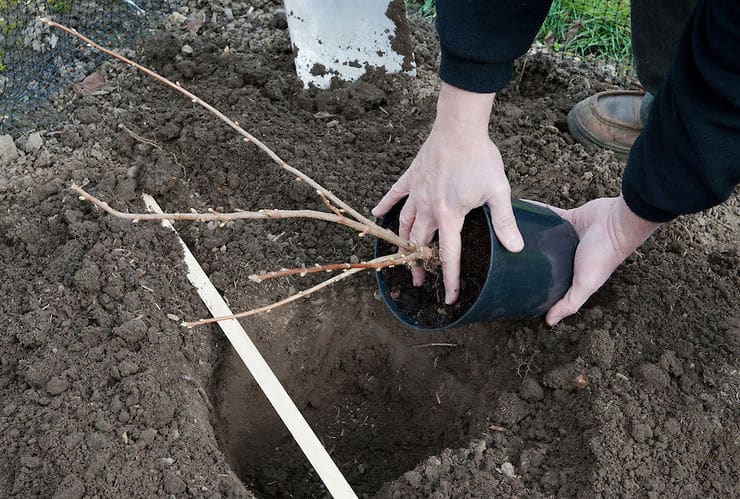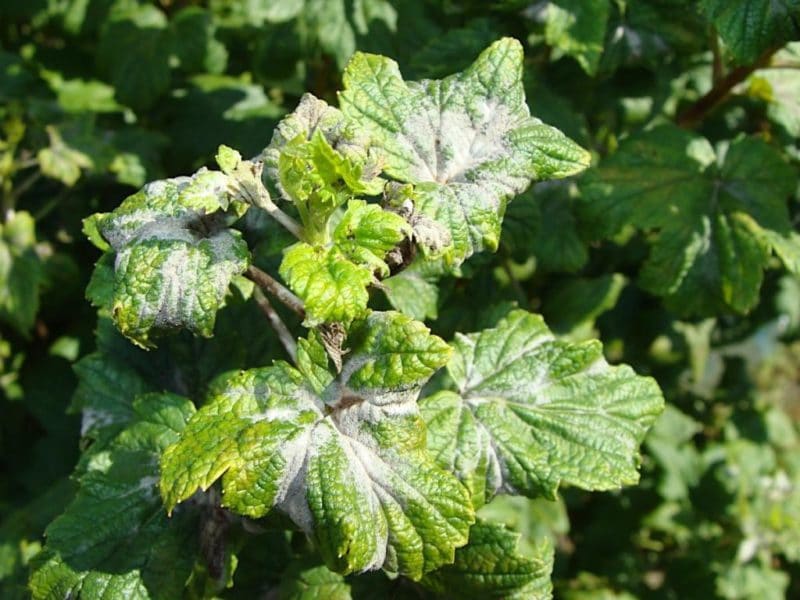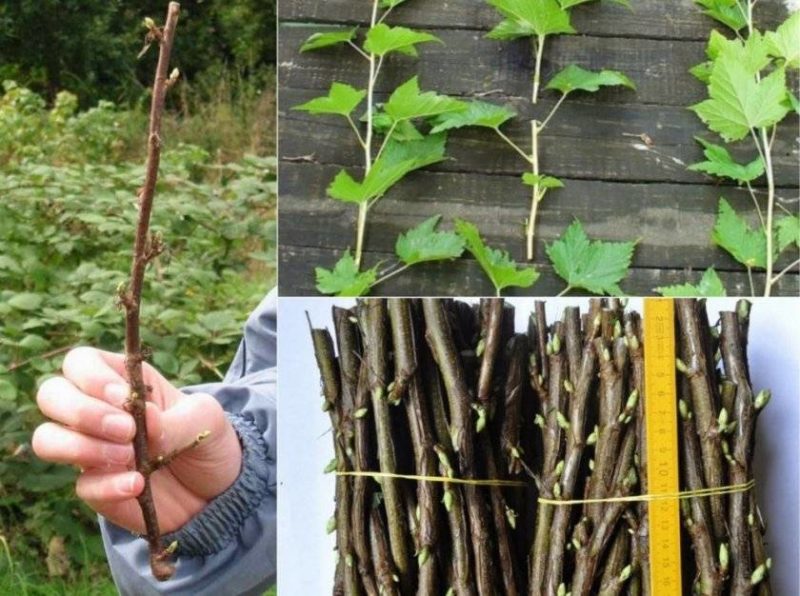Review of the currant variety Black Pearl (pearl): pros and cons, characteristics, growing secrets
Black pearl is a hybrid bred on the basis of the Bredtorp and Minai Shmyrev varieties. The crop is characterized by high yield, resistance to frost and drought, due to which it is successfully grown in many regions of Russia. The berries are large, selected, with a pearl shimmer. The taste is excellent, and the high pectin content allows you to prepare “live” jam, marmalade and jam from currants.
History of the development of Black Pearl currants
Currant hybrid Black Pearl is the result of breeding work by T. Zvyagin and K. Sergeev. The variety was bred at the All-Russian Research Institute named after I.V. Michurin as a result of crossing the Bredtorp and Minai Shmyrev varieties.
In 1992, the hybrid was included in the State Register and recommended for cultivation in the Central Black Earth region, the Middle Volga region, Western and Eastern Siberia, the Urals and the Northern Caucasus.
Currant Black Pearl: characteristics and description

The characteristics of Black Pearl are similar to those of Gooseberry. The hybrid also refers to the golden type of currant. The similarities lie in the branches growing downward and the leaves bending down. The appearance of the berries resembles blueberries.
Bushes of medium height - 1-1.3 m. Spreading branches, medium leafy. Young shoots are bright green and have a curved shape. Lignified branches become gray-yellow.
Elongated pink buds grow on short stems.The flowers are glass-shaped and the sepals are reddish. On each cluster, clusters of 6-8 berries are formed, which sit firmly on the petioles.
The leaves are bright green and have an acute-angled shape with five lobes. The surface of the sheet plate is smooth and matte, and the edges are bent. The teeth are large, serrated with white tips.
The duration of ripening is average. Weight of berries - 1.2-1.5 g. Large fruits reach 3 g. The shape is round, the size is the same. The taste is pleasant, sweet and sour. Taste characteristics - 4.2 points. The skin is dense, black, shiny, shimmers in the sun, resembling pearls. Currant fruits are black in color, which glitters in the sun and resembles pearls. The mint is greenish, juicy with a large number of seeds.
Berry composition: 133.3 mg vitamin C, 1.6% pectin, 3.6% organic acids, 9% sugar, 18% dry matter.
Ripe fruits do not fall off for a long time and are torn off dry, which allows currants to be transported over long distances. Durable petioles make it possible to mechanize harvesting.
Reference. The Black Pearl currant bush begins to bloom in May, and the fruits ripen in July.
Resistance to environmental conditions
The plant is winter-hardy and drought-resistant. In the northern regions it needs shelter for the winter; in the south it is grown as an uncovered crop.
Productivity
Hybrid Black Pearl bears fruit abundantly and regularly. It enters the fruiting period after 1-2 years. When planting in autumn, the first harvest is removed already in the summer - 1.5-2 kg.
The maximum harvest is collected in 5-6 years. Up to 5 kg of berries are harvested from one bush. The average yield is 3-4 kg.
Application area
The fruits are consumed fresh and processed in the form of jam, preserves, compotes, sauces. Cold preservation with a large amount of sugar allows you to preserve maximum vitamins, but even after heat treatment, the berries retain their benefits.
Blackcurrants are added to cake toppings and used as filling for open and closed pies. The high pectin content in the fruit allows you to prepare jelly, marmalade, and marshmallows. In addition, their currants produce aromatic homemade liqueurs and wine.
Advantages and disadvantages
Advantages of the Black Pearl hybrid:
- winter hardiness - bushes do not freeze at temperatures down to -35°C;

- resistance to anthracnose and kidney mite attacks;
- resistance to sudden changes in air temperature;
- drought resistance;
- precociousness;
- consistently high yield;
- possibility of transportation and freezing.
Flaws:
- predisposition to powdery mildew;
- weak aroma;
- the taste has more acidity than sweetness;
- the hybrid is considered somewhat outdated, since breeders have already developed many varieties and hybrids with better characteristics.
Growing technology
Black pearl currants are unpretentious, however, when growing it, it is recommended to adhere to a number of agrotechnical rules and take into account the characteristics of the crop. This affects the yield and resistance of the plant to adverse factors. Growing conditions are the same for all regions, except that in areas with harsh winters the bushes must be covered.
Landing dates
Blackcurrant bushes are planted throughout the growing season. In autumn - late September - early October. The plant will have time to take root and gain strength before the first frost arrives. The optimal temperature for autumn planting is +10 °C.
In spring, the shrub is planted until the buds swell. The first year will be spent growing and strengthening the plant.The first berries are harvested a year after planting. The average yield is 2 kg of berries per bush.
Advice. When purchasing seedlings, pay attention to the root system. It should be healthy, with no signs of damage. The shoot must have at least four green buds.
Optimal conditions
The most suitable place for planting black currants is a sunny and open area, protected from gusty winds. The culture does not like crowding, so the bushes need to be planted at a distance of at least 1.5 m from each other. The soil should be loose and nutritious, with a slightly acidic pH=6-6.5 units. The site must be located on a hill.
Reference. Currants growing in the shade receive insufficient nutrition. The berries are small and sour.
2-3 months before planting, the area is cleared of weeds and roots, the soil is plowed to a depth of half a meter and loosened. If necessary, add 1 liter of compost or humus per bush. Also, some gardeners recommend applying superphosphate and potash fertilizers. When planting in spring, all work is carried out in the fall.
Landing rules

Before planting, the roots of the seedling are inspected; if they are dry, they are immersed in clean water at room temperature for 3-4 hours. You can add a root formation stimulator to the water.
In the prepared area, dig a hole 50 cm deep and wide. At this stage, you can add fertilizer (if you did not have time to do so during the preparatory work) and mix it with the soil. Too dense, clogged soil will help loosen coarse sand. The hole is watered and the seedling is lowered into it at a slightly inclined angle. The angle between the stem and the soil is 45°. The hole is covered with earth, the roots are slightly shaken so that the soil is evenly distributed.The root collar is left 5-7 cm above the ground surface. The soil around the tree trunk is compacted and watered with clean water - 10 liters per bush. The distance between bushes is 1.5-2 m.
The shoots are cut 10-15 cm from the ground level, and make sure that 5-6 green buds remain on each.
Peat, branches, hay or sawdust are laid out on top of the ground. Mulch will reduce the frequency of weeding and retain moisture.
Further care
Hybrid Black Pearl will bear fruit consistently with proper care:
- During the flowering and fruiting period, the crop is provided with abundant watering. 20-30 liters of water are poured under each bush. It is especially important to carry out moisture-recharging watering before wintering.
- Weeds are removed promptly. Weeding is carried out after each watering in order to provide additional air flow to the roots.
- After planting, the first fertilizing is done after 3-4 years, provided that the remaining amount of nutrients was added before that. In the spring, the soil is fertilized with urea, and in the fall with phosphorus and potassium.
- The first pruning is done during planting; 5-6 buds are left on the shoots. Next, damaged, diseased and frozen branches are cut off, and young growth is shortened. Shoots older than 3 years are pruned annually. In the 4-5th year, the formation of the bush is completed and care is taken to ensure that branches of different ages remain on it.
Reference. Mulching the soil with humus eliminates the need for weeding, loosening and fertilizing with organic matter.
Possible problems, diseases, pests

Currant Black Pearl is predisposed to powdery mildew. Young bushes are especially affected. Branches, leaves and shoots are covered with a white coating, which then turns brown. As the disease progresses, the foliage falls off and the bush becomes crooked.Without treatment, the plant dies.
To combat powdery mildew, use a simple but reliable remedy - copper sulfate. The bushes are treated before flowering or after harvesting the fruits. Infusions of mullein and hay dust are effective. The mixture is diluted with water 1:3. Leave for three days and add the same amount of water again. The infusion is filtered and the bushes are irrigated with a spray bottle. The treatment is repeated after 2 weeks and in the second ten days of June.
Black Pearl Berries become the target of attacks insect pests, however, if the rules of care are not followed, spider mite, sawfly or aphid. To destroy pests, use “Fitoferm”, “Aktelik” or “Dichlorvos”.
Wintering
For the winter, the bushes are covered with burlap, spruce branches or spunbond. In regions with harsh weather conditions, snow is thrown over the covering material.
Pollinator varieties
The Black Pearl variety is self-pollinating, so it does not require additional pollination.
Reproduction

Hybrid Black Pearl breeds cuttings and layering. Layers are obtained in the spring: the lower shoots are bent and sprinkled with fertile soil, leaving the tops on the surface. Next, they are watered and fertilized, and in the fall they are separated from the mother bush and transplanted to a permanent place. Then the soil is mulched with dry leaves, sawdust or peat.
Cuttings are cut in early summer. Young and lignified cuttings are suitable for propagation. The bottom of the cutting is cut at an angle, the top is left straight. The length of the cutting is 15 cm. Next, it is placed in a jar with a solution of “Kornevin”, “Heteroauxin”, “Epin”. Before planting, they are dipped in a clay mash or kept in water for 2-3 days. Then cuttings planted in the ground, covered with polyethylene, watered from time to time, and mulched in winter. In the spring they are moved to a permanent place.
Reviews from summer residents
Reviews about Black Pearl currants are positive. Despite the fact that the variety is considered obsolete, the hybrid is popular among gardeners:
Ivan, Liski: “I planted Black Pearls in the country 5 years ago. In the second year I was already harvesting. The berries are selected, large, all of the same size. The skin is dense, the flesh is a little sour, it’s not for everyone, but our family likes it. We prepare cold jam and freeze it for the winter.”
Lyudmila, Ivanovo: “We grow several varieties of currants in the garden, but Black Pearl has taken root the best. For 7 years now, it has been pleasing us with a bountiful harvest and ease of care. In rainy summers, it suffers from powdery mildew, but I quickly deal with it with the help of copper sulfate, and I also additionally spray the bushes in the spring for prevention.”
Vasily, Belgorod: “Black currant is our favorite berry. The year before last I purchased several bushes of the Black Pearl hybrid to try and was not disappointed. In the first year I collected a small harvest, only 1 kg per bush, but the berries were all large. The taste is sweet and sour, the pulp is juicy, the skin is rather dense, but thanks to this, currants can be transported over long distances.”
Conclusion
Currant Black Pearl is an excellent combination of high yield, unpretentiousness and taste. The crop is grown in almost all regions of the country, with the exception of regions with harsh winters. The plant can withstand frosts down to -35°C, withstands drought, has strong immunity, but is prone to powdery mildew.
Caring for the crop is not burdensome and consists of timely watering, fertilizing, pruning and disease prevention.